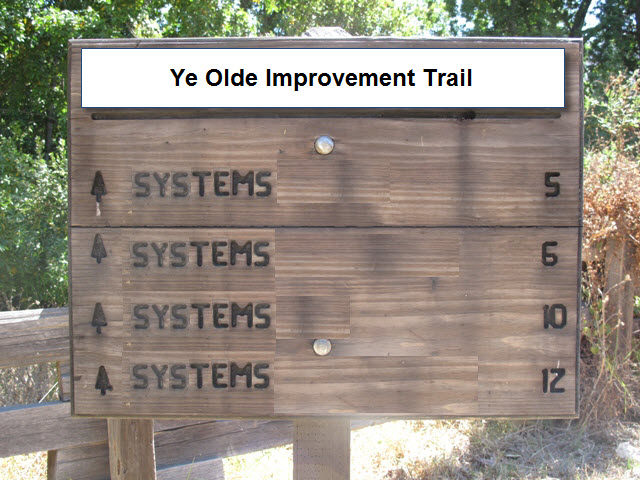As a Process Improvement professional, one of my key goals is to reduce tampering. This comes in many forms but increasingly I see it in the form of a new software system. Often there is a view that the current process doesn’t scale and so a software system will help it do so.
However, what really we should be asking here is: Does the current process system support scaling?
Let me give an example of a process that doesn’t scale with software and personnel just for easy target practice. :] You can imagine much more complicated examples but my aim is simplicity in attempt to be brief.
Parts A, B, and C are needed to produce Z. Parts may be assembled in a non-sequential order to fully complete Z but all parts must be used. B+C+A = Z
Things run smoothly for awhile but then parts B and C start getting assembled and there is no part A in inventory to complete the process. So these parts get placed in an area called: Waiting for A. When A arrives, parts are assembled and Z is complete.
This works for awhile and then parts C and A start getting completed quicker and so a new area called: Waiting for B is created. Now someone needs to be put in charge of this area because not only that but sometimes A and B are getting completed while part C isn’t in inventory. So a new area called: Waiting for C is created and a coordinator is hired.
After the expenditure of $43,000 salary for a Professional Coordinator, one of the workers joyfully exclaims: “I’m glad we hired the Professional Coordinator, because without our process, we’d never get Z done on time!”
Question: Did the underlying system issue ever get addressed? NO!!
After some amount of time passes, it’s realized Z is the top selling item for the business. It’s time to cash in and scale-up fast! The business needs 1,000 more Z items per month. The decision is made to invest in a $5,000 software system to help the Professional Coordinator increase conversions.
Soon it’s discovered that the various waiting areas need more inventory space, workers to move parts, and an additional Professional Coordinator is hired for process logistic purposes.
The business is now starting to exceed $100K on expenses just related to the Z operation.
Question: Did the additional capital expenses and implementation of a software system address the underlying system issue? NO!!
Conclusion: This was all an exercise in expensive tampering.
Some better objectives before purchasing software or hiring personnel to address these kinds of problems could be the following:
- Lean about what it takes to combine two parts. Are certain part combinations just able to be combined faster than others?
- Review the process of assembly for each scenario and look for common points of variation. Do certain parts go missing more frequently than others?
- When things ran smoothly initially, understand why. eg: “We never had a problem until X but we decided to ignore that and keep on going.”
My point is simple. Software systems can help you with tasks but hoping that they’ll address your system; is a fools errand.

